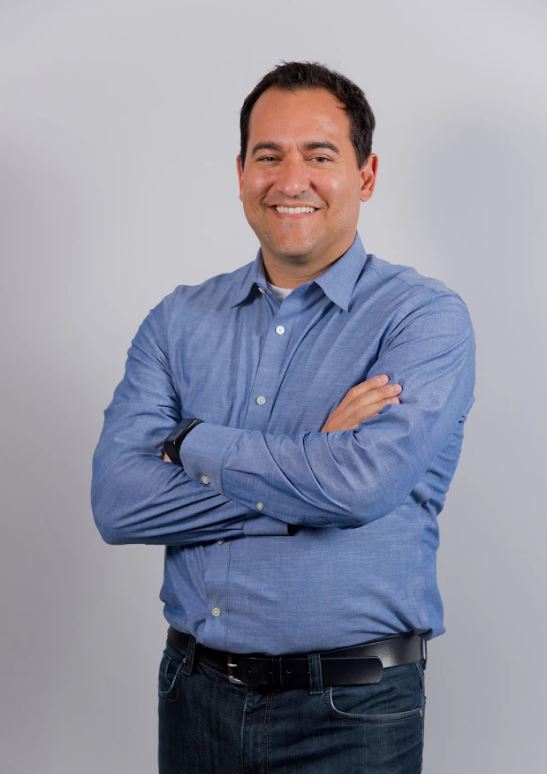
No one likes to leave money on the table and that’s exactly why Jeremy Miller thought to start up Health E-Commerce, parent company to FSAstore.com and HSAstore.com.
At a previous stop, Miller took on role of setting up and administering the health savings and flexible spending accounts and quickly realized how little people knew about these kinds of accounts. “A lot of the communication came in the form of handouts and there were really no explanations on how to use the FSA or HSA. None of the retailers out there were really helping with product eligibility questions or anything around that,” he recalled.
His research revealed to him a startling discovery: people were forfeiting in the neighborhood of $400 million in not knowing how to use these funds. This made Miller realize there was a huge niche and an opportunity to start e-commerce sites where people could directly buy FSA and HSA-eligible products. Health E-Commerce recently added Well Deserved, a direct-to-consumer shopping site that aims to make wellness rewards shopping easier to its portfolio.
Miller spoke with Chief Executive about the healthcare industry’s ongoing challenge to controlling costs, competing with Amazon and more. Below are excerpts from this conversation.
What’s the big challenge in healthcare these days when it comes to controlling costs?
You hear a lot about cost transparency and health insurance and you don’t hear as much about FSAs and HSAs. Take FSAs, for instance, I mean the fact that there’s a 20% adoption rate…so everyone’s who’s offered an FSA, one in five people are taking advantage.
The total spent each year in flexible spending accounts, tax free, is at $24 billion, so we estimate, if one in five are adopting, there’s a good $90 billion of tax free money left on the table. So, aside from insurance costs rising, people could be putting away tax free dollars to spend on those expenses and they’re not. So that to me is a huge issue.
It’s the same with HSAs, right? A lot of people are getting into HSAs, they have a lot of great features, they’re a triple taxed savings account, you can put in tax free, you can grow your funds tax free, you can take them out for medical expenses, tax free. But there’s still three in five people that have this eligible plan that don’t use the HSA. So I think that there’s really an awareness question. There are 110 million who have access but don’t enroll. So those are some really large numbers and when you kind of add it up, it’s a pretty big waste.
Why is that happening? I think people view it as a sideline benefit. I think employers provide complex information about these type of accounts. I don’t think the retailers are really helping define what’s covered in the stores and online like we do, and even brands, we’re onboarding a hundred brands this year of different products that are covered, and some of these brands didn’t even know this is an option. Like, L’Oréal. They’re like, “What’s this?”
Is this educational aspect the biggest challenge that you guys face?
I think there are three challenges that we face. Yes, one of the biggest ones is making people aware. I think a lot of times people overlook these accounts, and I think just an awareness around what the benefits truly can be. I mean, when you actually add it up, right, you’re talking about FSA, you’re talking about HSA, you’re talking dependent care reimbursement up to $5,000 a year, and then also transportation, that all falls under the FSA category. And so that adds up. I mean that could be almost $10,000 a year in tax free savings.
So I think really making people aware of that I think is a big challenge and we’ve made some great strides into making people aware and using the site. And I think that that’s something that we’ll consistently try to do is make them aware and make it simple.
Another challenge is there’s not a lot of visibility into the products and services that are covered. And back in 2010, that really took a turn because half the products that were originally covered became only covered with prescription. And a lot of people are like, “Well, what does that mean?” People assume that all products now, all over-the-counter products needed a prescription, when it was only half. So, the 4,000 products we sell on our site, I’d say about 3,800 of them are fully eligible without any need for a script.

Chief Executive Group exists to improve the performance of U.S. CEOs, senior executives and public-company directors, helping you grow your companies, build your communities and strengthen society. Learn more at chiefexecutivegroup.com.
0

1:00 - 5:00 pm
Over 70% of Executives Surveyed Agree: Many Strategic Planning Efforts Lack Systematic Approach Tips for Enhancing Your Strategic Planning Process
Executives expressed frustration with their current strategic planning process. Issues include:
Steve Rutan and Denise Harrison have put together an afternoon workshop that will provide the tools you need to address these concerns. They have worked with hundreds of executives to develop a systematic approach that will enable your team to make better decisions during strategic planning. Steve and Denise will walk you through exercises for prioritizing your lists and steps that will reset and reinvigorate your process. This will be a hands-on workshop that will enable you to think about your business as you use the tools that are being presented. If you are ready for a Strategic Planning tune-up, select this workshop in your registration form. The additional fee of $695 will be added to your total.

2:00 - 5:00 pm
Female leaders face the same issues all leaders do, but they often face additional challenges too. In this peer session, we will facilitate a discussion of best practices and how to overcome common barriers to help women leaders be more effective within and outside their organizations.
Limited space available.

10:30 - 5:00 pm
General’s Retreat at Hermitage Golf Course
Sponsored by UBS
General’s Retreat, built in 1986 with architect Gary Roger Baird, has been voted the “Best Golf Course in Nashville” and is a “must play” when visiting the Nashville, Tennessee area. With the beautiful setting along the Cumberland River, golfers of all capabilities will thoroughly enjoy the golf, scenery and hospitality.
The golf outing fee includes transportation to and from the hotel, greens/cart fees, use of practice facilities, and boxed lunch. The bus will leave the hotel at 10:30 am for a noon shotgun start and return to the hotel after the cocktail reception following the completion of the round.